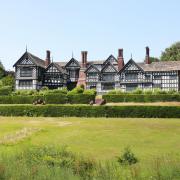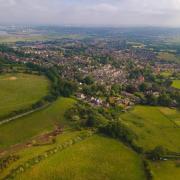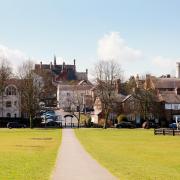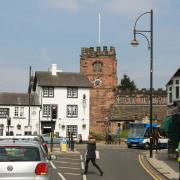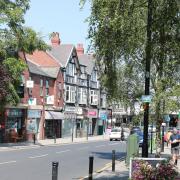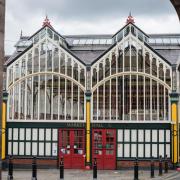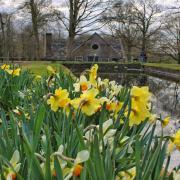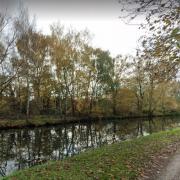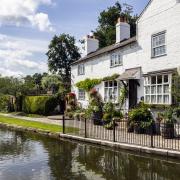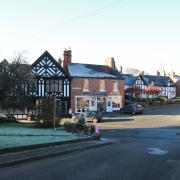Channel 4’s drama The Mill - set and filmed at Quarry Bank Mill in Styal - told a fascinating tale of hard times and social upheaval. But it did not tell one uncomfortable truth about mill owner’s wife Hannah Greg
The stirring TV drama The Mill showed Hannah Greg at a meeting in Manchester to campaign for the emancipation of the slaves.
And Hannah – the liberal driving force behind the paternalism of her mill-owning husband Samuel – was surely an opponent of slavery. But the acclaimed TV drama used artistic licence in two respects. Firstly, at the time The Mill was set, in the 1830s, Hannah was already dead. Secondly, she had through her latter years kept silent on the vexed question of slavery.
‘She was liberal and compassionate by nature, and all her friends were active campaigners to stop the slave trade and to move forward the emancipation of the slaves in the West Indies and America,’ says David Sekers, museum director at Quarry Bank Mill, Styal, from 1978 to 1989 and author of a newly published book about Hannah Greg, A Lady of Cotton.
‘In reality, Hannah Greg did not say anything publicly about this because, apart from anything else, Samuel Greg inherited slave plantations. She couldn’t be a public hypocrite so she kept quiet.’
Samuel, on the other hand, would have regarded slavery as ‘a fact of life’, despite his reputation as a compassionate and progressive manager of Quarry Bank Mill, says David who was historical consultant to the programme makers. Though the mill was regarded as ‘a model of paternalism’, tending to the health and well-being of its workers, the reality was that amid the machines were children as young as nine, working a 69-hour week.
By the 1830s, some were beginning to question whether an army of orphans, waifs and strays pressed into the service of British mill owners were very different from the slaves on the plantations.
‘When the mill was started, Hannah Greg was a profound good influence on the way it was set up,’ says David. ‘She was pleased that the community of mill workers at Styal – some of whom she had seen arrive as young children – grew up, married and had children and lived in the community. People who came with nothing had achieved a lot, shown their potential and lived a moral, decent life.’
Hannah, who bore 13 children, 12 of whom survived, even wrote five books of moral instruction to guide the apprentices, and her own children, in how to lead a useful life. She died in 1828 having suffered for years with gallstones for which she dosed herself with laudanum.
Hannah Lightbody grew up an ‘exceptionally gifted’ Liverpool girl, daughter of a merchant who died when she was 12.
‘She was well-educated in a lively dissenting community in Stoke Newington in London with great revolutionary figures of the day like Mary Wollstonecraft (writer and women’s rights campaigner) as her neighbours,’ says David. ‘She came back to Liverpool and met some of the great activists and thinkers and abolitionists. She heard the first sermon against slavery and all her friends were abolitionists.’
Hannah married merchant Samuel Greg in 1789, and threw herself into the welfare of the workforce whose toil swelled the family fortune.
‘She managed a tremendously busy domestic life at Quarry Bank House, with masses of bright people – professors, archaeologists and thinkers – coming for lunch, tea and dinner,’ says David. ‘It was a cosmopolitan world she ran, unlike almost any other provincial mill owner’s wife.’
For all her enlightened principles, however, she could not bring herself to proclaim publicly on that great issue of the day, slavery.
‘I found one scrap of paper in the archives which was a quotation from a book which was condemning the slave trade, over which she’d written a note to the effect that being silent on this subject is unbelievably painful,’ says David. ‘I take that to mean it was the most unbearable thing not to able to say what she felt and believed about the slave trade.’
A Lady of Cotton: Hannah Greg, Mistress of Quarry Bank Mill by David Sekers is published by The History Press at £9.99
Fact file
• Quarry Bank Mill was built by Samuel Greg on the banks of the River Bollin at Styal in 1784, and went on to manufacture cotton products for almost 200 years.
• By 1860, Quarry Bank was the headquarters of one of the largest cotton businesses in Britain, with five other mills in Manchester, otherwise known as Cottonopolis.
• Over half of Samuel Greg’s workforce were poor and orphaned children, for whom The Apprentice House at Styal was built in 1790.
• The children were given good medical care by the Greg family doctor, and education in writing and maths three nights a week.
• Although the child workers were not subjected to corporal punishment, bad behaviour brought overtime, threats that girls would have their heads shaved or young workers being locked in a room for days on a porridge-only diet.
• Esther Price, the feisty Scouse mill worker played by Kerrie Hayes in The Mill, was a real person who wrote a memoir of her time at Quarry Bank. When the TV drama showed Kerrie being locked in a room as a punishment, the scene was shot in the very same room where Esther herself was incarcerated.
• Quarry Bank Mill, The Apprentice House, the Gregs’ home and garden remain much as they were in the days depicted in The Mill. The estate and its archives were given to the National Trust in 1939.




